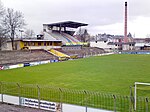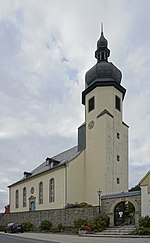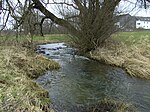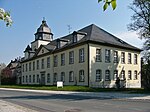Botanischer Garten der Stadt Hof

The Botanischer Garten der Stadt Hof is a municipal botanical garden located in the Theresienstein park, at Alte Plauener Strasse 16, Hof, Bavaria, Germany. It is open daily in the warmer months without charge. The garden started sometime before 1929 as a municipal garden for teaching students, and from 1929 to 1932 was developed as a botanical garden by city gardener Rudolf Hutschenreiter. During World War II, it was used primarily for vegetables. Reconstruction began after the war, to new designs created by gardener Herrmann Fuchs from 1958 to 1998. The garden is divided into two major areas: a geometrical Rosarium, and a landscaped garden with alpine garden, Jura Mountains collection, lily pond, shade area, medicinal herb garden, heathers, succulents, and expansive perennials plantings. Plantings include both local species and varieties from around the world.
Excerpt from the Wikipedia article Botanischer Garten der Stadt Hof (License: CC BY-SA 3.0, Authors, Images).Botanischer Garten der Stadt Hof
Albert-Einstein-Straße,
Geographical coordinates (GPS) Address Nearby Places Show on map
Geographical coordinates (GPS)
| Latitude | Longitude |
|---|---|
| N 50.324444444444 ° | E 11.936944444444 ° |
Address
Campus Hochschule Hof & Verwaltungshochschule Hof
Albert-Einstein-Straße
95028 , Leimitz
Bavaria, Germany
Open on Google Maps










